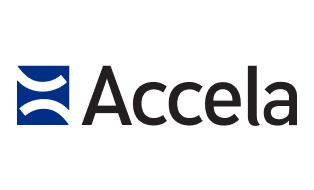From adaptable design to launch-readiness, learn the essential technical components you should demand in an IT business and occupational licensing solution

Effective business and occupational licensing tools are an essential ingredient to any modern city. They amplify customer service, increase agency revenues, reduce costs, break down the barriers for data sharing between departments and energize economic development initiatives.
Yet the complexities of government, coupled with an immense variety of licensing tools, can present difficulties. State and local CIOs can be hard pressed to decipher what is needed. Departments have to consider the level of integration between their new licensing systems and supporting systems. They must decide whether to build their solution on premise or off. They must ensure compliance with cybersecurity standards, meet local reporting requirements and deliver a service scalable enough to process literally thousands of different licensing applications on a regular basis.
Over the years, Accela has launched hundreds of business and occupational licensing solutions for states and cities throughout the U.S. In many cases, these efforts have doubled the application volume jurisdictions can process, and in nearly all cases the tools eliminated an array of manual tasks that can require overtime and seasonal staffing just to complete.
To assist localities in their search for the right IT, here are five features and components every local government should consider for an effective licensing solution.
1. Software as a Service
Modern government demands modern tools, and in the era of open government, constant change and instant access, Software-as-a-Service (SaaS) is a linchpin technology. SaaS empowers governments to be agile, affording agencies the ability to keep pace with private sector technologies and adapt their solutions to fluctuations in regulations or service demands. When SaaS is applied to business and occupational licensing, staff get the latest tools, the newest product versions and top-notch cybersecurity at significantly reduced costs.
2. Quick delivery
Delivery and deployment speed is a distinguishing factor when selecting the right licensing tool. Whether you’re a large state or a small city, implementation of an effective SaaS solution should be quick, not lasting more than 18 months to keep costs down. Further, once live, the system should have capacity to ensure licenses are approved within 24-48 hours. This accelerates revenue streams for localities, and more importantly, allows business owners and professionals a jumpstart on their trades and services.
3. Automated workflows
Whether business or occupation, licensing departments have dozens of unique licenses with their own tasks, workflows and business rules. A solid licensing system is configurable, automates tasks, can handle multiple workflows simultaneously while notifying staff and applicants on status updates, fee collections and next steps. Further, the system should be sophisticated enough to handle these workflows in an easy and user-friendly way. The system should be intuitive for staff and citizens.
4. Adaptable design
Cities and states know that tasks and workflows are constantly subject to change. New licenses can be added, renewal processes may change, fees raise, inspection criteria shift and newer IT systems and staff need to be integrated into the process. Whatever solution a city chooses it should be adaptable enough to facilitate such changes.
5. Reporting
The right information leads to the right decisions. This is why governments should seek licensing solutions that can report granular details associated with tasks while also delivering a higher level analysis of data for decision making. Agencies should get dashboards that can provide a single view of all application and renewal processes underway. Information involving approvals, denials, Service Level Agreements (SLAs) should all be readily available as well.
Click here for more details about Accela’s Occupational and Business Licensing Solutions.




